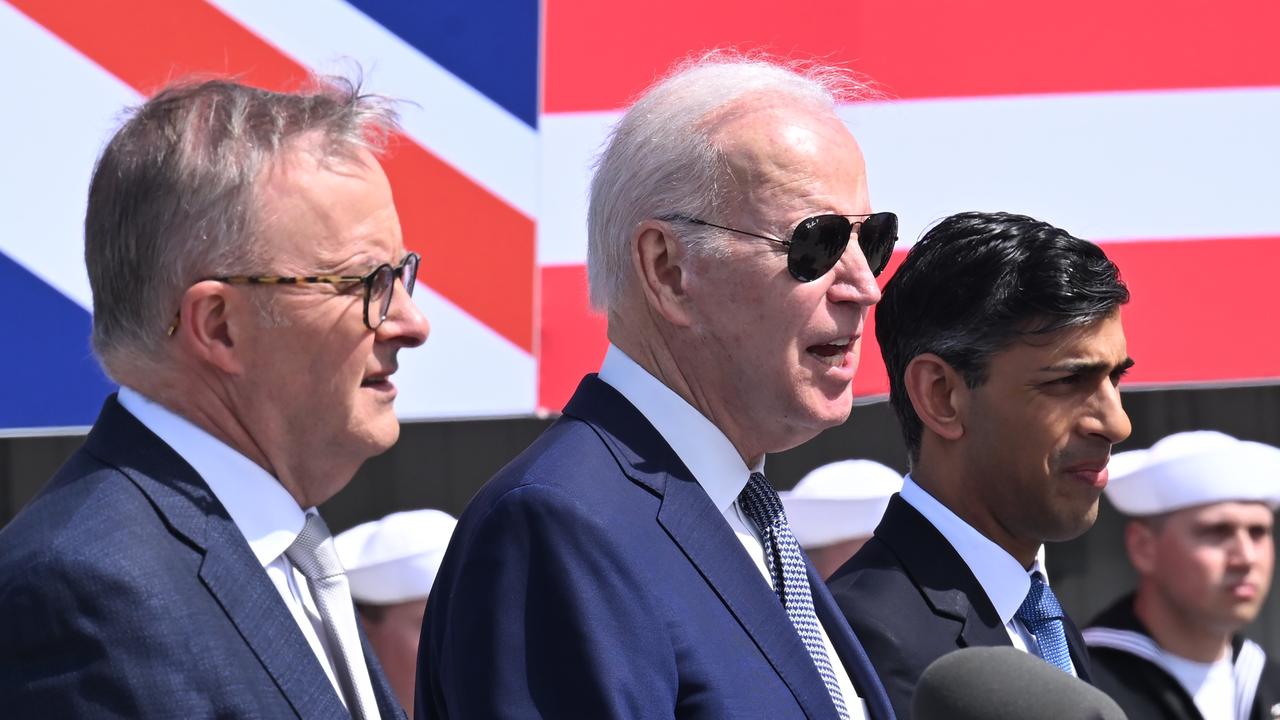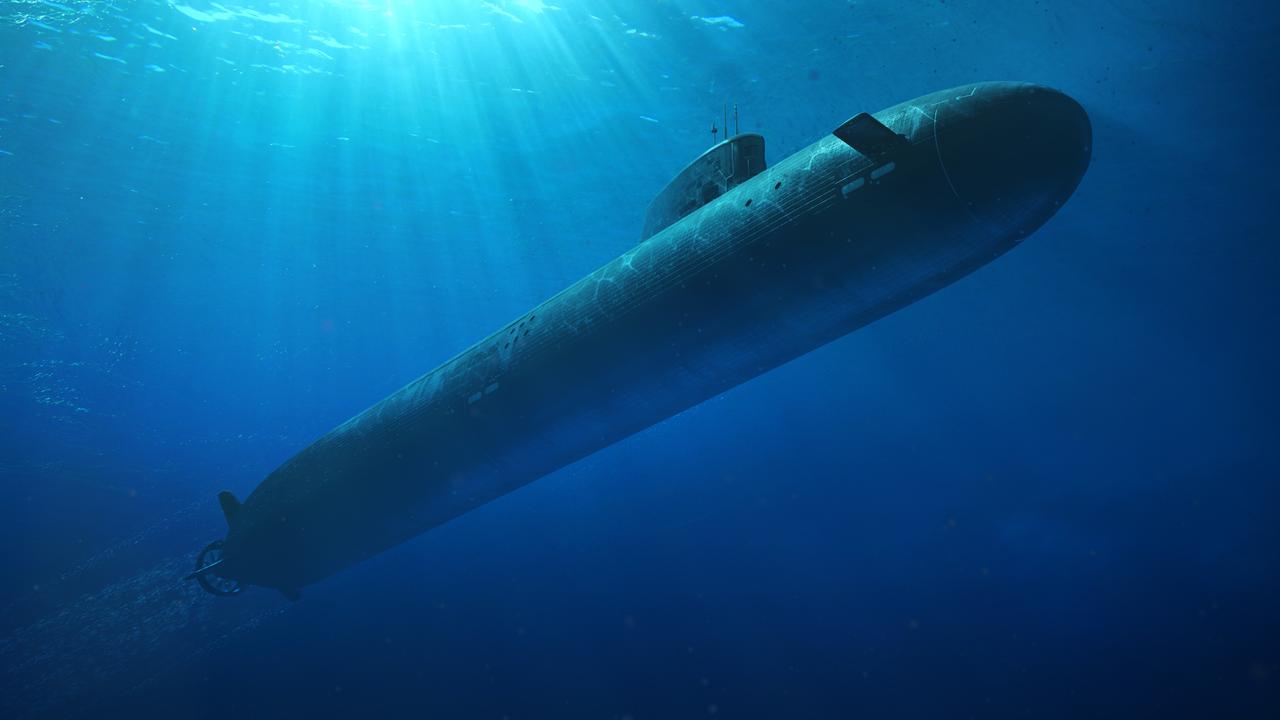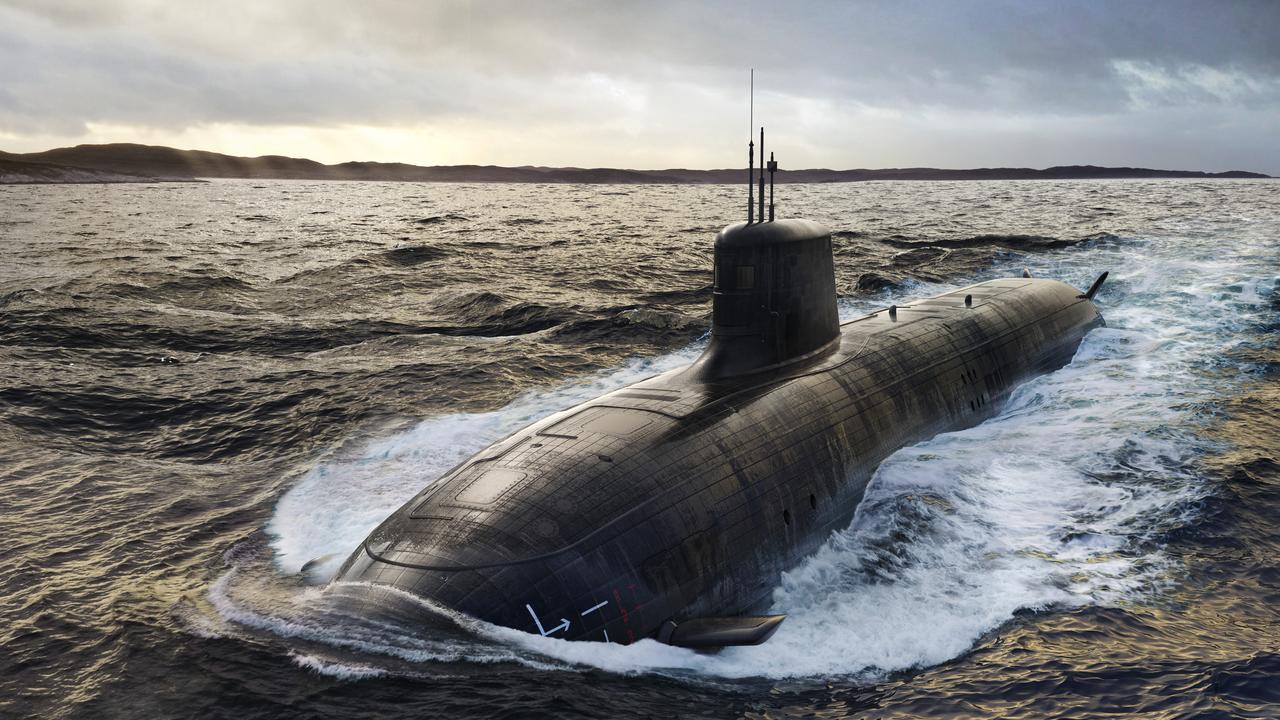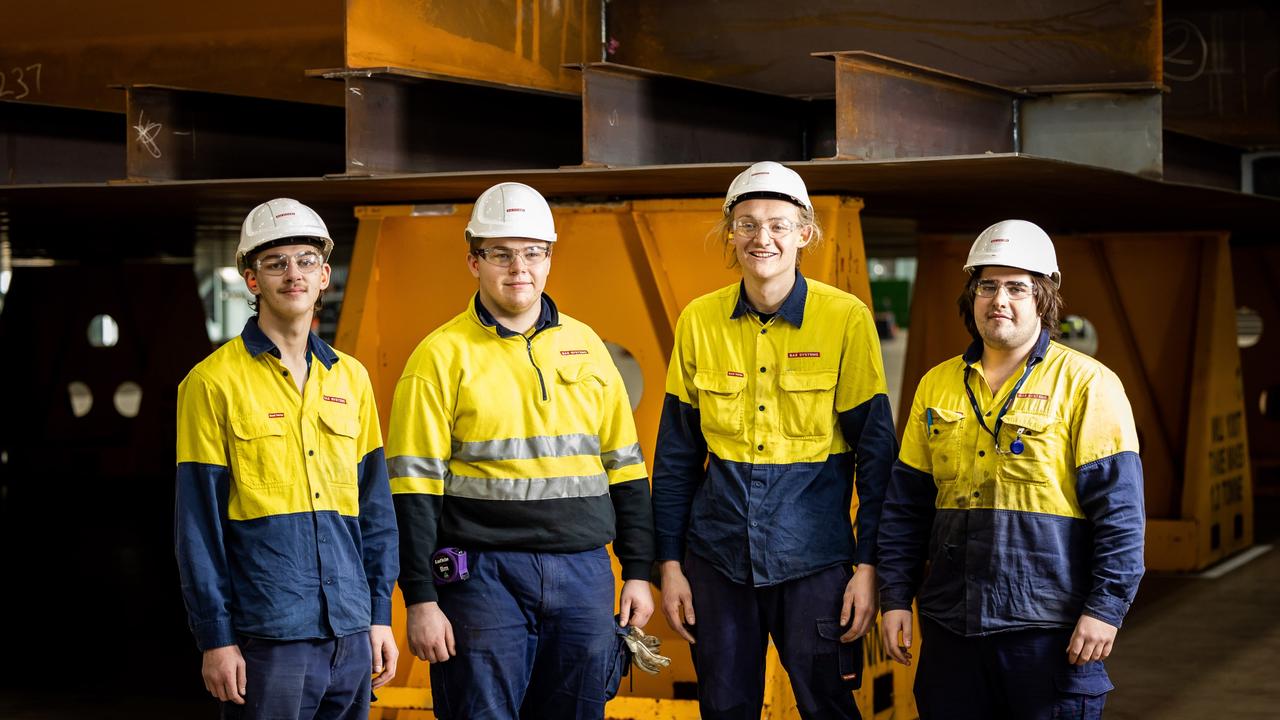PM reveals ‘optimal pathway’ for Australia to acquire a fleet of nuclear-powered submarines
Questions hanging over the future of South Australia’s shipbuilding industry have been answered in a major announcement this morning. We explain the deal.
SA News
Don't miss out on the headlines from SA News. Followed categories will be added to My News.
Questions hanging over the future of South Australia’s shipbuilding industry have been answered definitively.
An unlimited number of nuclear-powered submarines will be built in Adelaide, with at least eight completed over the next four decades.
This year, work will start on building the new submarine shipyard at Osborne before construction begins on the first SSN-AUKUS submarine – a next-generation UK design fitted with cutting edge technology from all three countries – by the end of this decade.
The announcement of the “optimal pathway” on Tuesday morning that Australia will spend up to $368bn to deliver a historic nuclear submarine program should shoot down any sceptics who suggest the federal government would abandon SA’s capable shipbuilding industry and give in to the temptation to purchase solely Virginia-class submarines “off the shelf”.
At least three US submarines will be purchased in the 2030s, solving a capability gap that had the potential to imperil Australia’s safety in the Asia Pacific region. This measure is necessary for global stability, but it’s important to recognise this won’t come at the cost of South Australian jobs and economic activity, as previously feared in the lead-up to Tuesday’s AUKUS announcement.

There has been a very clear commitment from the three AUKUS leaders that Adelaide will be the bona fide home of Australian shipbuilding. Navy officials say Osborne will be thrust into the world’s top four shipbuilding precincts, on par with Barrow in the UK and Groton and Rhode Island in the US.
Establishing this capability in Adelaide as quickly as possible will make it infeasible for future governments over the coming decades to even consider reversing SA’s role as a world-leading shipbuilding hub.
Asked if South Australians should be cynical about AUKUS submarine construction in Adelaide because the French design had been scrapped, Premier Peter Malinauskas said this was a “good morning for South Australians” and “worth being excited about”.
“I think most South Australians aren’t waking up to thinking about a boulevard of broken dreams. I think most South Australians are waking up this morning exceptionally excited about the biggest opportunity we’ve had in our state’s history, indeed our nation’s history, for a positive step change to improve our economic complexity,” Mr Malinauskas told ABC Radio.
“And my responsibility as Premier of the state is to make sure that we’re doing what we can at a state level to make the changes within our education, training and skill systems to meet those needs of the future, and that’s what we’re committed to doing.
“I believe that when you’ve got the President of the United States, the British Prime Minister and the Australian Prime Minister going through, in substantial detail, all the work that has been undertaken – not in the next 10 or 20 years, but in the next two to four years – to be able to realise this ambition, it’s serious, and it’s one worth investing in and planning for, and that’s exactly what my government is doing.
“It’s a good morning for South Australians and I think that we shouldn’t lose sight of just how historic an undertaking this is and it’s worth, I think being, excited about.”

The federal government has also given a clear commitment to commence work on extending the life of the Collins-class submarines from 2026, supporting 1500 SA jobs.
There is very little in this “optimal pathway” that should concern South Australian defence industry firms, or the state’s army of shipbuilders and tradespeople. It should in fact give them reason for immense excitement for opportunities that will last generations.
Not only will there be almost immediate work happening in SA – with the construction of the new shipyard and cutting steel on the first SSN-AUKUS sub – but there will be great opportunities to land work in the British and American supply chains.
The whole point of AUKUS is for the three nations to contribute to each other’s defence capabilities.
This will mean opportunities for Australian civilians and military personnel to work at US and UK shipyards from this year to gain crucial experience and skills, while relieving pressure on our allies’ overstretched defence industries.
The new SSN-AUKUS submarine, considered a next-generation replacement for the UK’s Astute-class, will give Australia a huge advantage in the Indo Pacific region. The UK will build its own fleet of SSN-AUKUS boats, meaning the two navies will be operating the same platform.
Navy officials say this will give Australia a new level of interoperability with our closest allies that we have never been able to achieve with the conventional, but still highly capable, Collins-class submarines.
Because the Collins fleet is diesel-electric, we cannot perform the same tasks as the US and UK, which both operate nuclear-powered boats.
On joint military missions with our allies, Australia is often assigned “different” tasks. In other words, Australia gets lumped with the more basic tasks while the big boys handle the stuff that only nuclear-powered submarines can do.
Building SSN-AUKUS submarines in Adelaide will elevate Australia as a global military force with immense influence in the Asia Pacific region – which will go a long way to countering China’s rising belligerence.
Foreign Affairs Minister Penny Wong acknowledged cynicism about the project’s future, citing three different submarine plans by the previous federal Coalition government: an offshore Japanese build, a French design built in Adelaide and the current AUKUS plan.
“We are very focused on making sure that this happens and we are very focused on making sure that the largest investment in Australian and South Australian industrial capability in the nation’s history delivers not just capability for the ADF but the economic transformation that I know South Australians want,” she told ABC Radio.
Asked if the deal to build submarines in Adelaide risked being scuttled if Donald Trump was re-elected as US President in 2024, Senator Wong emphasised the extensive support across the US and UK.
“We are looking at a project where there is broad political support from across the political spectrum in both the United Kingdom and the United States. So you’ve seen members of Congress, members of the Republican Party, also supportive of this. So what I would say is I think there is an understanding on both sides of politics – across to the UK and across the Pacific to the US – that this is a necessary and important part of our collaboration at a time where we see a lot more competition in the world.
“We see the risk of escalation. What we want is to ensure we have sufficient deterrence to keep the peace. That’s why we’re all involved in this and that’s why we’re doing this.”

Asked about Chinese President Xi Jinping’s vow to modernise the military to make a “Great Wall of Steel “ to protect the nation, Senator Wong said Australia wanted everyone’s sovereignty to be respected.
“Australia seeks a capability such as this in order to ensure we have a peaceful, stable region. We want to keep the peace,” she said.
“And when it comes to great power competition, you would have heard me say publicly, on more than one occasion, that we should be urging the great powers to manage their competition wisely.
“I’ve spoken about the need for guardrails. I’m pleased that President Biden has put guard rails on the table. We would encourage the Chinese – we would urge them – to participate in that dialogue with the United States because Australia and the whole region wants peace.”
AUKUS A ‘QUANTUM LEAP FORWARD’: OLSEN
John Olsen, an ex-diplomat to the US and one of the state’s most senior Liberals, declared the AUKUS security pact a “quantum … leap forward” that was previously almost unimaginable.
“We have relied on the US and our alliance over many decades, but this project takes it a quantum step forward beyond the scope of what previously would have been held as an advantage in co-operation between the US and Australia,” Mr Olsen told The Advertiser.
“The AUKUS initiative is just, in quantum terms, an extraordinary leap forward and … indicates that Australia is recognised as a key nation within the Asia Pacific region and its importance will continue to grow substantially and exponentially.”
Mr Olsen, the federal Liberal party president, said SA’s reputation itself would be heightened on the global stage as a key player in countering a belligerent China, which is undergoing its biggest military build-up since World War II.
“Australia is an island trading nation reliant on shipping routes and our long-term interest is to ensure no interruption,” Mr Olsen said.
“The unity and resolve of the three nations in itself is a deterrent to that.
“South Australia will be profiled internationally as a key contributor to sophisticated defence manufacturing, and that in itself will be beneficial in decades to come for South Australia.”
After serving as SA’s premier from 1996 to 2001, Mr Olsen was posted to Los Angeles as Australia’s consul-general and then later to New York.

The Australian Manufacturing Workers Union estimates 300 shipbuilding apprentices in various trades must be trained each year to prepare SA for the mammoth task of constructing the submarines.
The union’s SA state secretary, Peter Bauer, is calling for an “engineering centre of excellence” to be established at the Osborne shipyard, in collaboration with defence companies and state and federal governments.
“We are looking for – comparative to what happens overseas – about 300 apprentices a year going through that centre so we can get a workforce of about 5000 people by the time the subs (construction) starts,” Mr Bauer said.
“It’s a massive opportunity – it’s going to be one of the most advanced engineering projects in the world.”
Significant details of the AUKUS plan were leaked from both sides of the Atlantic last week, as it emerged Australia was expected to purchase up to five Virginia-class nuclear submarines from the US by the mid-2030s.
The project is expected to create 20,000 Aussie jobs over the next three decades, with up to 8500 positions supported at the peak of submarine construction at Adelaide’s Osborne shipyard.
gabriel.polychronis@news.com.au
More Coverage
Originally published as PM reveals ‘optimal pathway’ for Australia to acquire a fleet of nuclear-powered submarines









